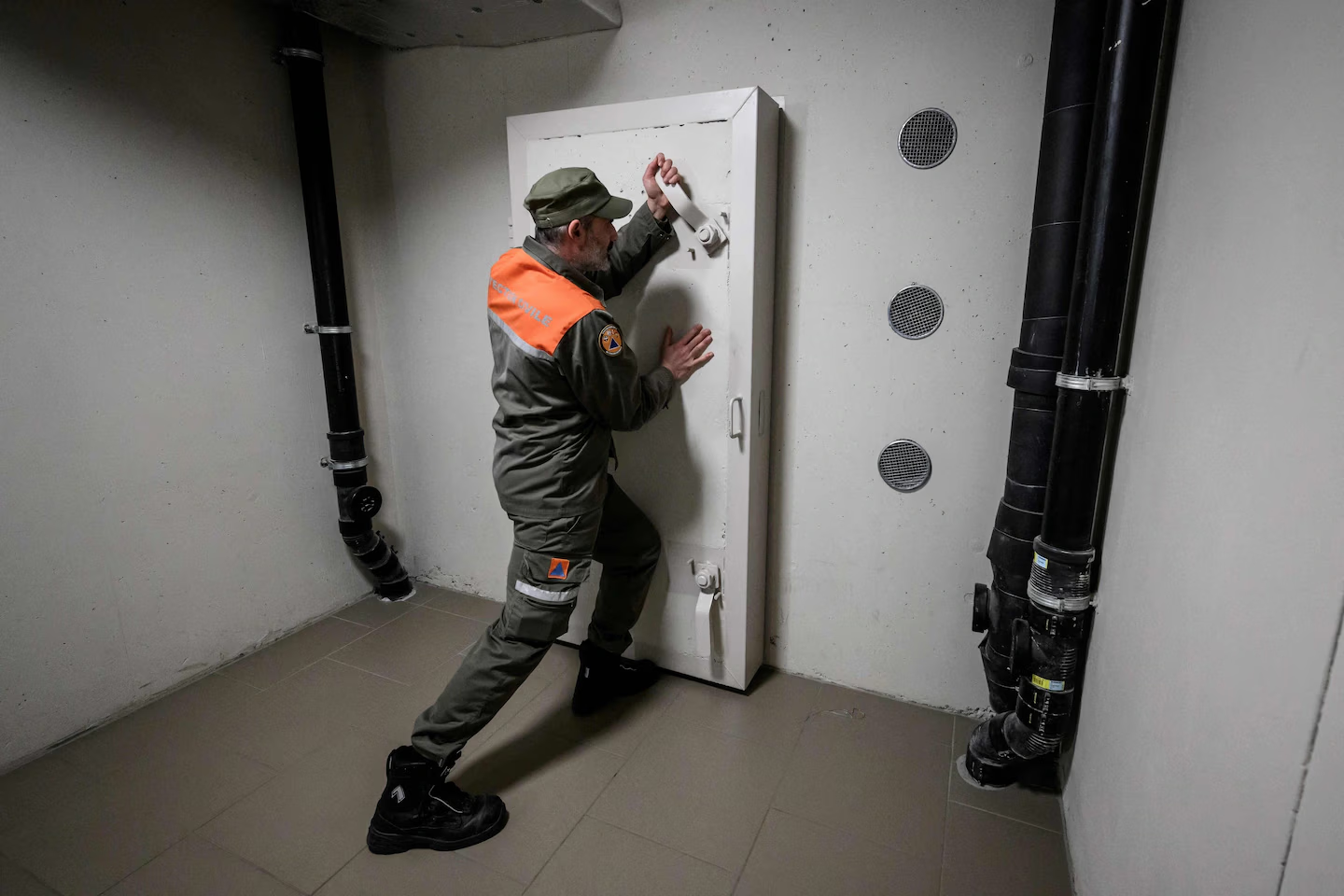Among the cobblestone streets and medieval houses of Zurich’s old town lies a place that never fails to astonish visitors on Samantha Eschbach’s tours. Urania is a multi-level underground complex spanning seven floors. At first glance, it looks like an ordinary parking garage—but in fact it is a modern military fortification hidden in plain sight, explains the owner of the Zurich Insider tour company to her guests.
The garage serves as one of Switzerland’s largest public shelters, capable of housing 11,000 people in an emergency. It contains drinking water reserves, backup generators, gas filters, and a control system.
“You’d have to really try to stumble upon it by accident,” says Eschbach. According to her, the discovery sparks a flood of questions among visitors—mostly from the Americas and Europe—about Switzerland’s military history and who has the right to use the shelter in case of danger. “Everyone’s surprised, and then they all want to know more, and the tour goes off in a completely new direction,” she laughs.
Preparedness for the unforeseen is almost a national tradition here. Military or civil service is mandatory for everyone, and the country is interlaced with a network of roughly 370,000 individual shelters designed to accommodate every one of its nearly nine million residents. Separate facilities are designated for civil defense and the army.
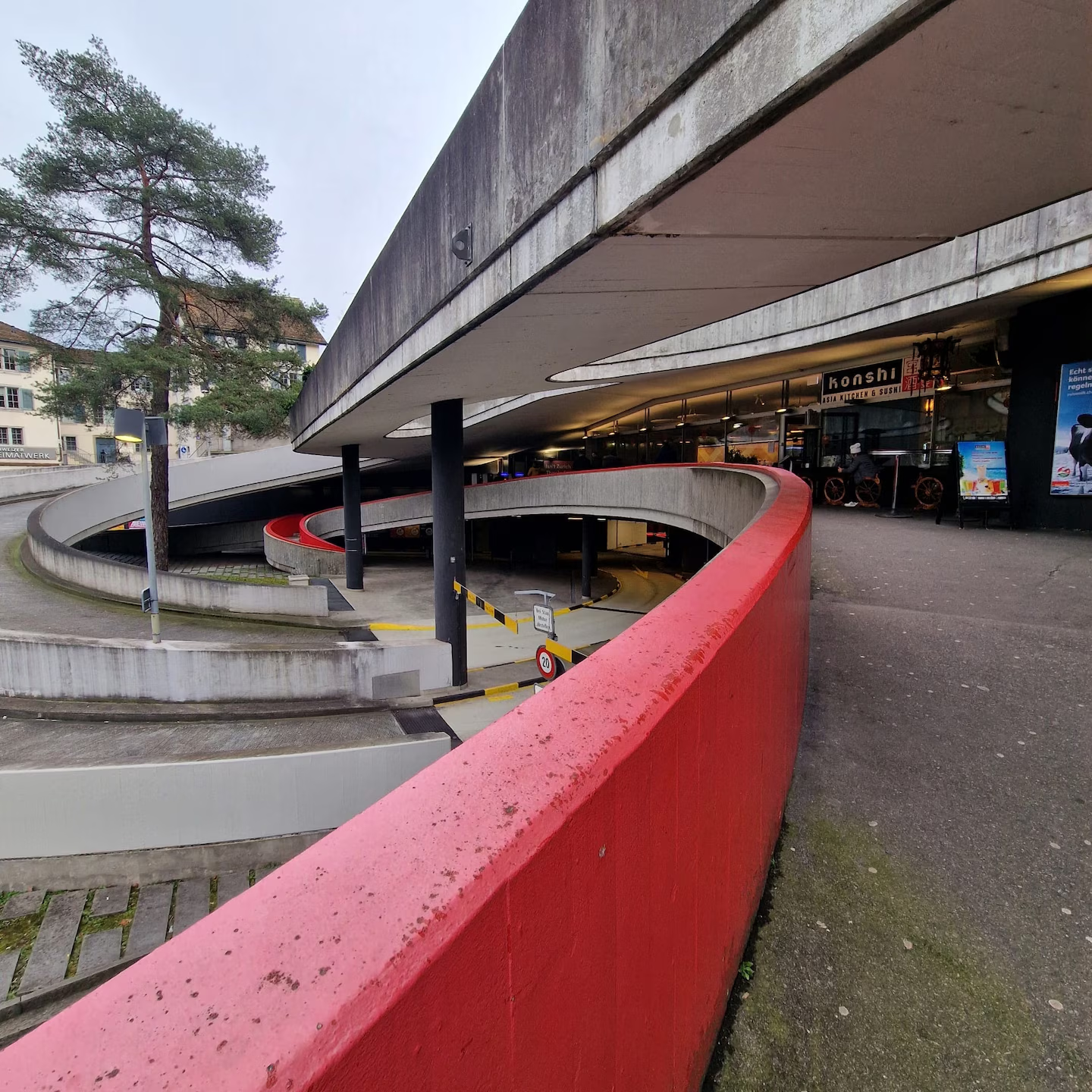
Urania is a vast underground parking facility in central Zurich that also serves as a bunker capable of sheltering up to 11,000 people in an emergency.
Now neutral Switzerland is investing hundreds of millions of dollars to modernize this vast network amid a “changing global security landscape.”
Starting in 2026, a new civil protection decree will come into effect: over the next 15 years, 200 major bunkers will be upgraded at a total cost of $276 million. The mandatory fee that developers must pay local authorities for the construction of public shelters will rise from about $1,000 to more than $1,700 per person.
In addition, Swiss cantons have already begun replacing aging ventilation and filtration systems, many of which are nearly 40 years old. A $1.2 billion fund has been allocated for this purpose over 15 years, though the timeline may be shortened, a government representative said.
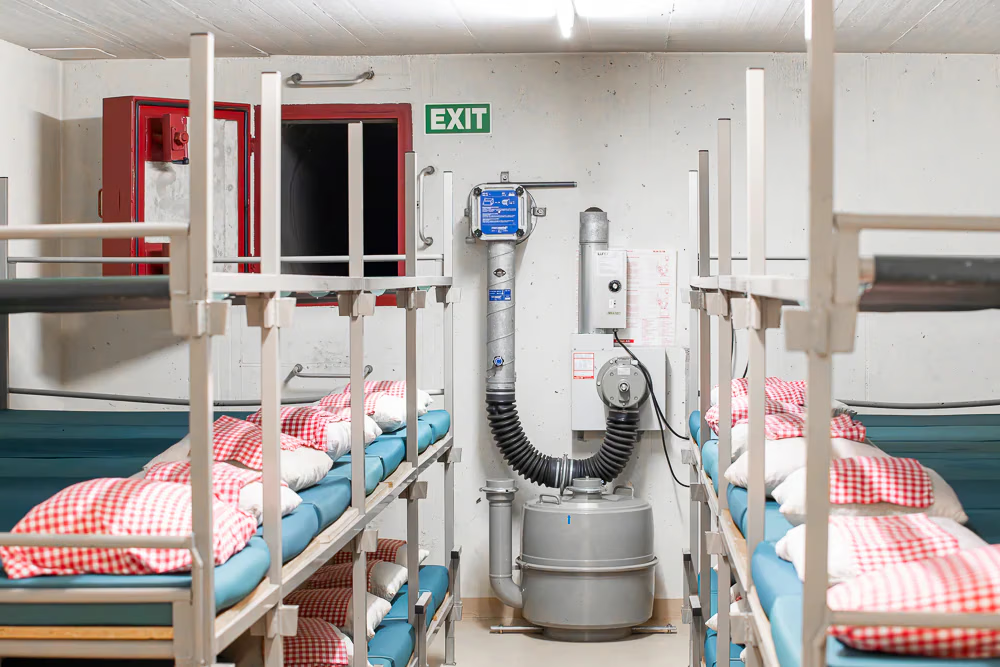
A photograph released by the civil protection service of the canton of Vaud shows installed bunk beds inside a shelter. Under Swiss standards, a bunker’s outer shell must be built of reinforced concrete and equipped with blast doors, ventilation systems, emergency exits, and airlocks designed to withstand nuclear, biological, and chemical weapons.
The army, for its part, is seeking new ideas for turning existing fortifications into “hard-to-reach defensive nodes” and has invited companies and startups to submit proposals this month.
Switzerland Upgrades Its Shelter Network Amid the War in Ukraine and Europe’s Growing Militarization
Switzerland’s historic overhaul of its shelter system comes against the backdrop of Russia’s war on Ukraine, which has ushered in a new era of alarming militarization across Europe. Denmark, Sweden, Finland, France, and the United Kingdom are revising conscription rules, boosting defense budgets, testing alert systems, updating public awareness campaigns, and urging citizens to stock essential supplies.
Although Switzerland has maintained political neutrality for centuries, the right to personal shelter is enshrined in the Federal Civil Protection Act adopted in 1963. According to Silvia Berger Ziauddin, professor of Swiss and Modern History at the University of Bern, the country’s “shelter mentality” is part of its national DNA. It dates back to the National Redoubt strategy of the late 19th century, when bunkers were built in the Swiss Alps to guard against foreign invasion, and later evolved in response to the nuclear threats of the Cold War. The development of the network, she notes, was made possible by a mix of political will and external circumstances.
Over the decades, many large bunkers have been sold by the army and repurposed—as museums, mushroom farms, or cheese-aging cellars. In 2011, the requirement to build private shelters was almost repealed, but the Fukushima disaster in Japan and, later, the war in Ukraine restored its relevance. Authorities are now trying to adapt existing infrastructure to what they call an era of “multiple crises,” where overlapping threats must be addressed simultaneously, and are paying greater attention to potential wartime scenarios, Berger Ziauddin says.
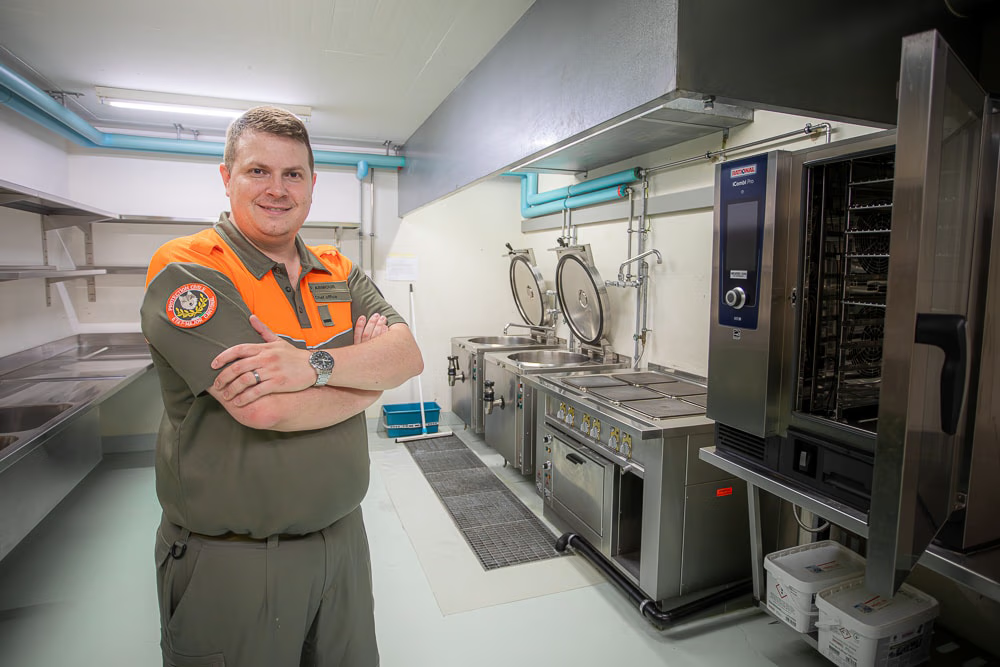
Major Frank Armor, a staff officer with the civil protection service of the canton of Vaud, said that interest in bunkers has surged since the start of the war in Ukraine.
Daniel Jordi, head of the Civil Protection and Preparedness Department at the Ministry of Defense, Civil Protection and Sport, explains that most of the country’s shelters are located near residential buildings—but now the agency is rethinking how to protect people away from home.
“The economy must keep functioning even during war. That’s clear from every modern conflict,” he said in a phone interview. “Some people have to go to work. And if you’re in a big city—like Kyiv today—and the air raid sirens go off, those people need somewhere to take cover.”
Authorities are also considering how to keep schools operating and avoid “unnecessary trauma among the younger generation.” Jordi added that Switzerland is studying the experiences of other countries—including Ukraine, Finland, and Israel. “We need to define precisely what we want to protect ourselves against,” he said.
According to him, with an estimated cost of about $1,800 per person over 60 years of maintenance, such shelters represent “a reliable insurance policy.” “It’s an enormous infrastructure,” he noted, “but ultimately it’s cheaper than any other form of population protection.”
Of the roughly 370,000 bunkers across the country, many are built into residential buildings, while about 1,700 are designated for command centers and field hospitals. Although some are used for storage, all are constructed to strict standards: outer walls of reinforced concrete, blast-resistant doors, ventilation systems, emergency exits, and airlocks designed to withstand nuclear, biological, and chemical threats. Each person must have at least one square meter of floor space and 2.5 cubic meters of air volume. Every 30 people are entitled to one dry toilet cabin, though some shelters are equipped with flush toilets and showers.
The allocation of shelter spaces remains a closely guarded secret. Major Frank Armor of the Civil Protection Headquarters in the canton of Vaud said that in the event of an emergency, the government would issue an order for the “preliminary allocation” of spaces, after which local authorities would have five days to make the shelters operational. Information for citizens would be released only on government instruction.
“When the war in Ukraine began, many people started asking about the shelters,” Armor said. “They wanted to know where they were, how the spaces were allocated, and whether there would be enough for everyone. The initial panic has since subsided, but the very existence of the network provides a sense of security.”
Bunkers Become a Business: Growing Demand for Shelters in Switzerland and Beyond
Few nations can match Switzerland’s commitment to preparedness, but around the world, many are trying to keep up. The global “prepper” movement—people preparing for Doomsday or, as they joke, even just for “Tuesday,” the dullest day of the week—is becoming increasingly mainstream.
According to Silvia Berger Ziauddin, Swiss companies have been at the forefront of a “commercialized security landscape” since the 1960s, when the country began exporting its technology and expertise—cementing its reputation as a producer of reliable, high-tech safety solutions.
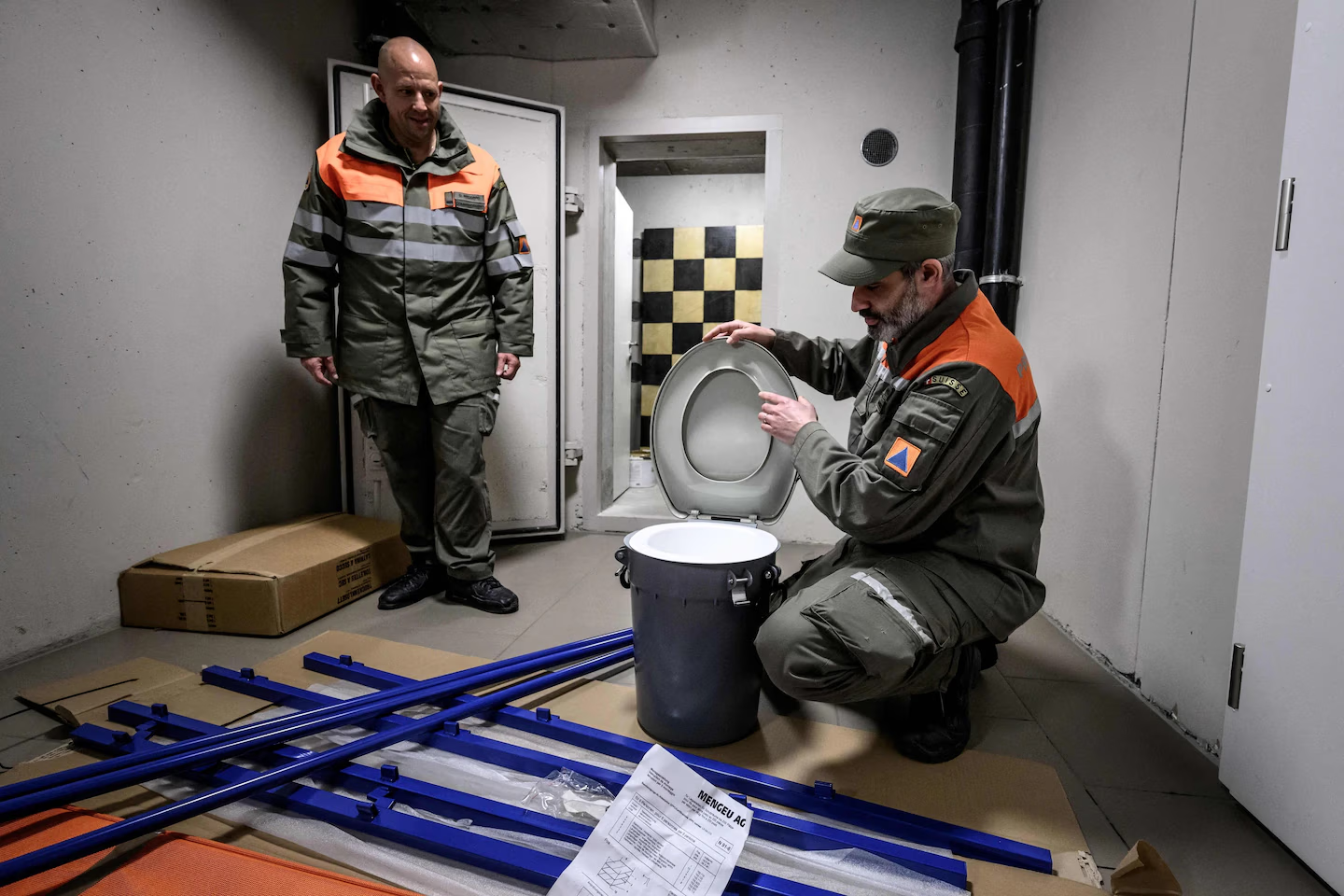
Civil defense officers from the canton of Geneva demonstrate a composting toilet model and a foldable bed kit inside a private concrete nuclear fallout shelter located beneath a residential building in Meyrin, near Geneva.
Xavier Brun, CEO of Bunker Swiss—a company that sells custom shelters, DIY bunker kits, and refurbished military installations in Switzerland and abroad—says the wars in Ukraine and the Middle East have triggered a surge in demand among those seeking privacy and protection. “A lot of people have questions; a lot of people are afraid,” Brun said. He is now looking for a European distributor to help sell prefabricated bunker kits priced between $46,000 and $93,000—roughly half the cost of a fully customized shelter.
In the United States, demand for bunkers is also growing, said Ron Hubbard, head of the Texas-based company Atlas Survival Shelters. Prices there range from around $20,000 for a basic model to as much as $1 million for luxury designs. American bunkers often come with “crazy” features—from secret passages and home theaters to wine-tasting rooms—while Swiss designs remain practical and functional. Still, Hubbard says he wishes the U.S. would adopt Switzerland’s civil defense model, with a shelter or safe room in every home and regular emergency drills for schoolchildren.
“One of my goals is to convince the Trump administration to bring back a national civil defense system in America,” he said.
For Erich Breitenmoser, owner of one of Switzerland’s largest private bunkers, the national modernization program is “a matter of common sense.” A former chiropractor and consultant, he bought Fort Fürggels—a 1939 fortress built to defend against Hitler’s army—in 2019 for what he describes as a “seven-figure sum.” The purchase, he says, brings not only the satisfaction of owning a piece of history but also peace of mind.
“Noah didn’t build the Ark during the flood—he built it before,” Breitenmoser said. “Maybe you’ll never need it. But if you do, you’ll be grateful it’s there.”
